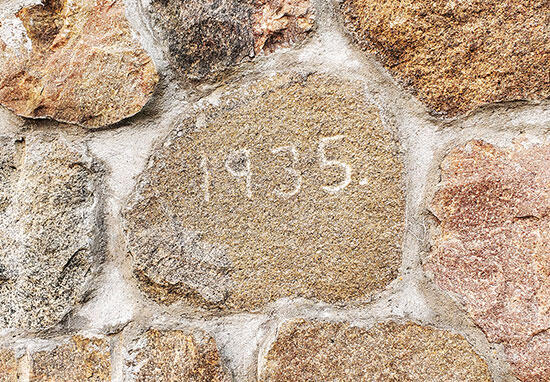WPA Wall historic significance in Buffalo
Two founding members of the Buffalo Historic Preservation Board hosted a meeting about the Buffalo Lake Scenic Overlook the evening of Tuesday, May 16. Twenty-two people gathered in the Buffalo Community Center as Shala Holm and Jack McAlister gave a presentation on the history of the Buffalo Lake Scenic Overlook, aka the WPA (Works Progress Administration) Wall.
Though the WPA Wall is somewhat hidden upon first glance, it holds a dense history of the hard work of numerous community residents almost a hundred years ago. Holm and McAlister have volunteered their time since January 2020 gathering the history of this wall and what it means to the Buffalo community.
They began their research with the hope to add the WPA Wall to the National Historic Register. After that was initially unsuccessful due to logistics, they decided to use their research to nominate the wall to be on the City of Buffalo Heritage Registry. Holm says she had no idea what this project would become at the start of her research.
“When I started helping Jack research the wall, I didn’t really know what I was doing, but once you find your first bit of information, it is such a thrill, you kind of get hooked on ‘the search.”
In 1935, the Village of Buffalo, the Minnesota Highway Department, and the Federal Emergency Relief Administration (FERA), along with the well-known landscape architect, A.R. Nichols, collaborated to design a roadside stop in Buffalo. This stop would be designed in the “rustic” style of the National Parks to beautify the shoreline of Buffalo Lake.
At the time, Highway 55 ran right by Buffalo Lake, so with the new feature, visitors could stop their car and take pictures. According to the Wright County Journal-Press in February of 1935, this new structure “would make Buffalo Lake one of the beauty spots of the state.”
With funds from FERA, 55 men from nearby communities were hired for 55 cents/hour to construct this large feat. The structure would be 250 feet wide, about 11 feet high above ground, and have two balconies. Using mortar and boulders from nearby farms, these men cracked boulders and poured mortar to create the new tourist stop. You can still see “1935” carved into one of the stones, most likely by one of the workers.
Though the construction was started 88 years ago, the legacies of the wall and the workers who made it have not died out. At the Tuesday night meeting, Holm and McAlister shared photos they had received from community members of the wall and the workers throughout the years. Some were photos of couples stopping for a quick photo-op, families piled on the wall for a picture, and early images of the finished structure.
They also showed a photo of one of the workers, Jim Haverty, a farmer in Chatham Township, with his wife and three of his five daughters; the youngest of which, Sandy Anderson, who was not born at the time the photo had been taken but submitted the photo of her family and sat listening in the audience.
Another set of photos was of the couple Kris Schneider Carlson and Andy Carlson recreating the photos of his parents, who had stopped for a picture while driving to their honeymoon. Holm says this connection to people is her favorite part of her research.
“What I have enjoyed most about researching the history of Buffalo is the people I have met, and the stories and pictures they have shared of their families. To me, the history of a building or site becomes more alive when you include people who built, lived, or worked in them.”
Many of the meeting attendees, including Holm and McAlister, expressed their wish to maintain the wall and honor its legacy by making it a Historic Site in Buffalo. McAlister and Holm hope to use their involvement in the Buffalo Historical Society and the Buffalo Heritage Preservation Board to acknowledge and protect other important historic sites in Buffalo as well. As early as the Fall of 2023, citizens of Buffalo may be able to nominate other spots to the list.
After the meeting at the Buffalo Community Center, 15 meeting attendees went down the road to take a look at the WPA Wall. The setting sun peered over the lake as they explored the lakeside feature. Some attendees went to find the “1935” carved on the side closest to the lake, while others stood over it to look at the view of Buffalo Lake.
Regardless of its relative anonymity to most of the public, the WPA Wall reminds us of the rich history of the town. Holm says they hope their project will inspire people to take an interest in local history and help protect these important locations.
“There is a lot of history in the buildings downtown. If we can educate people about that history, my hope would be that people will see the value in maintaining them for future generations.”
If you have any information on the WPA Wall or the people who worked on it, please email History buffs1856@gmail.com or find them on Facebook at Buffalo Historical Society.



